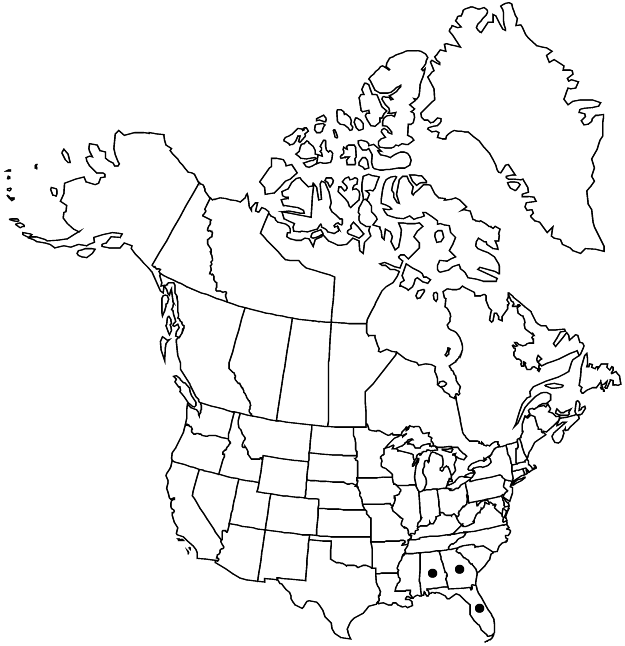Polygonella fimbriata
Brittonia 15: 190. 1963.
Herbs, annual, gynomonoecious, 1–6 dm. Stems erect, simple or sparingly branched proximally, scabrous or, sometimes, glabrous proximally. Leaves persistent; ocrea margins ciliate; blade linear to falcate, (10–)19–36(–50) × (0.6–)1–1.5(–3) mm, base tapered, margins not hyaline, apex acuminate, minutely scabrous. Inflorescences (5–)10–24(–30) mm; ocreola encircling rachis, only the base adnate to rachis, apex acuminate. Pedicels spreading in anthesis and fruit, 0.1–0.7 mm, as long as or much longer than subtending ocreola. Flowers bisexual or some pistillate, these usually distal; outer tepals loosely appressed in anthesis and fruit, pink with white margins, often drying orange, ovate, 1.1–2.3 mm in anthesis, margins erose; inner and transitional tepals loosely appressed in anthesis and fruit, pink with white margins, often drying orange, oblong, 1.2–2.2 mm in anthesis, margins deeply fringed; filaments monomorphic; anthers pink; styles and stigmas 0.6–1.3 mm in anthesis. Achenes included or exserted, yellow-brown, 3-gonous, 1.5–2.5 × 1–1.5 mm, shiny and smooth proximally, dull to shiny and minutely roughened distally.
Phenology: Flowering Jul–Oct.
Habitat: Sandy pine-oak forests and sandhills
Elevation: 10-200 m
Distribution

Ala., Fla., Ga.
Discussion
The chromosome number of 2n = 32 listed for Polygonella fimbriata by P. O. Lewis and D. J. Crawford (1995) appears to be in error. They cited J. H. Horton (1963) as the source; Horton did not count this species.
Selected References
None.